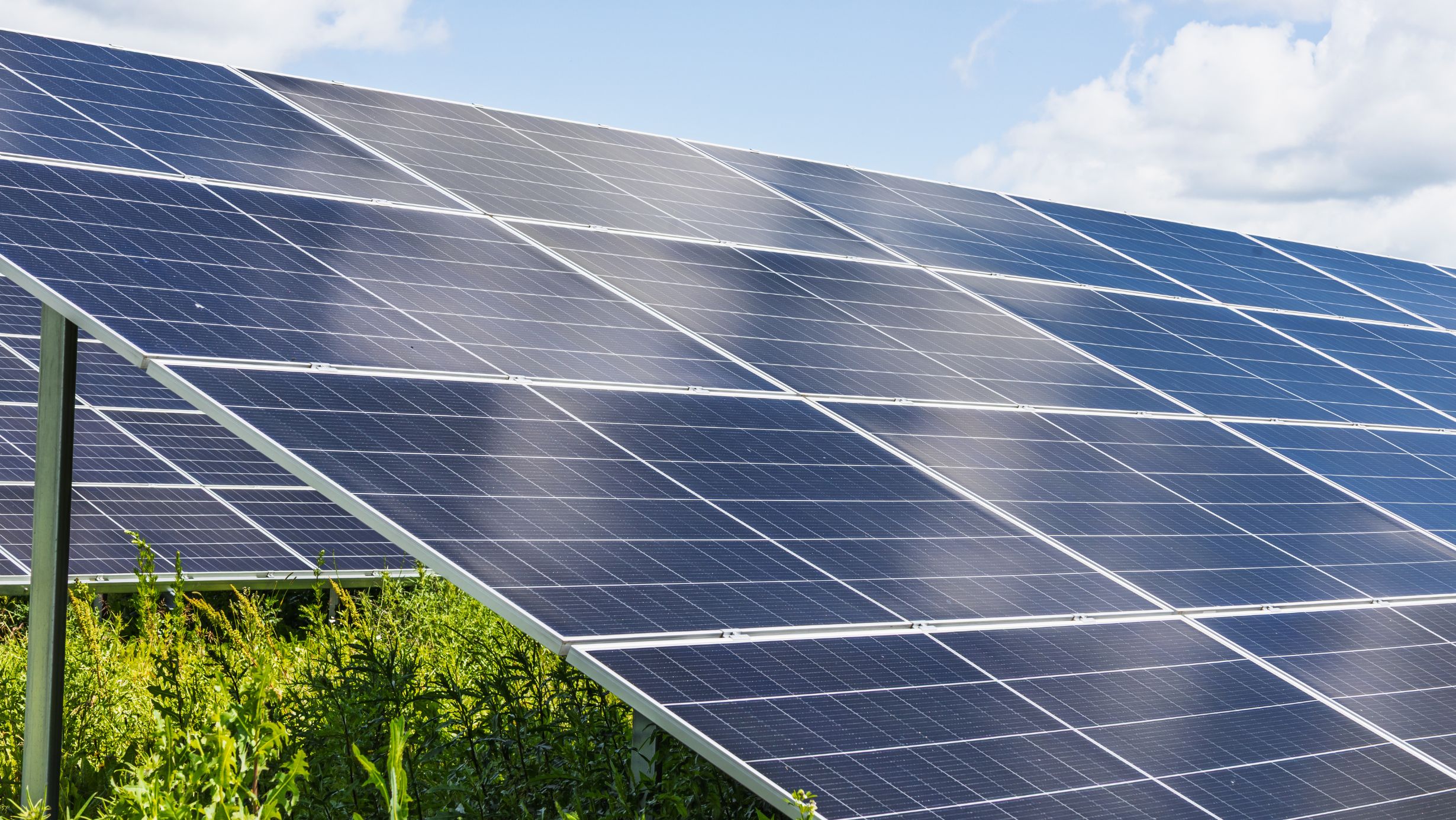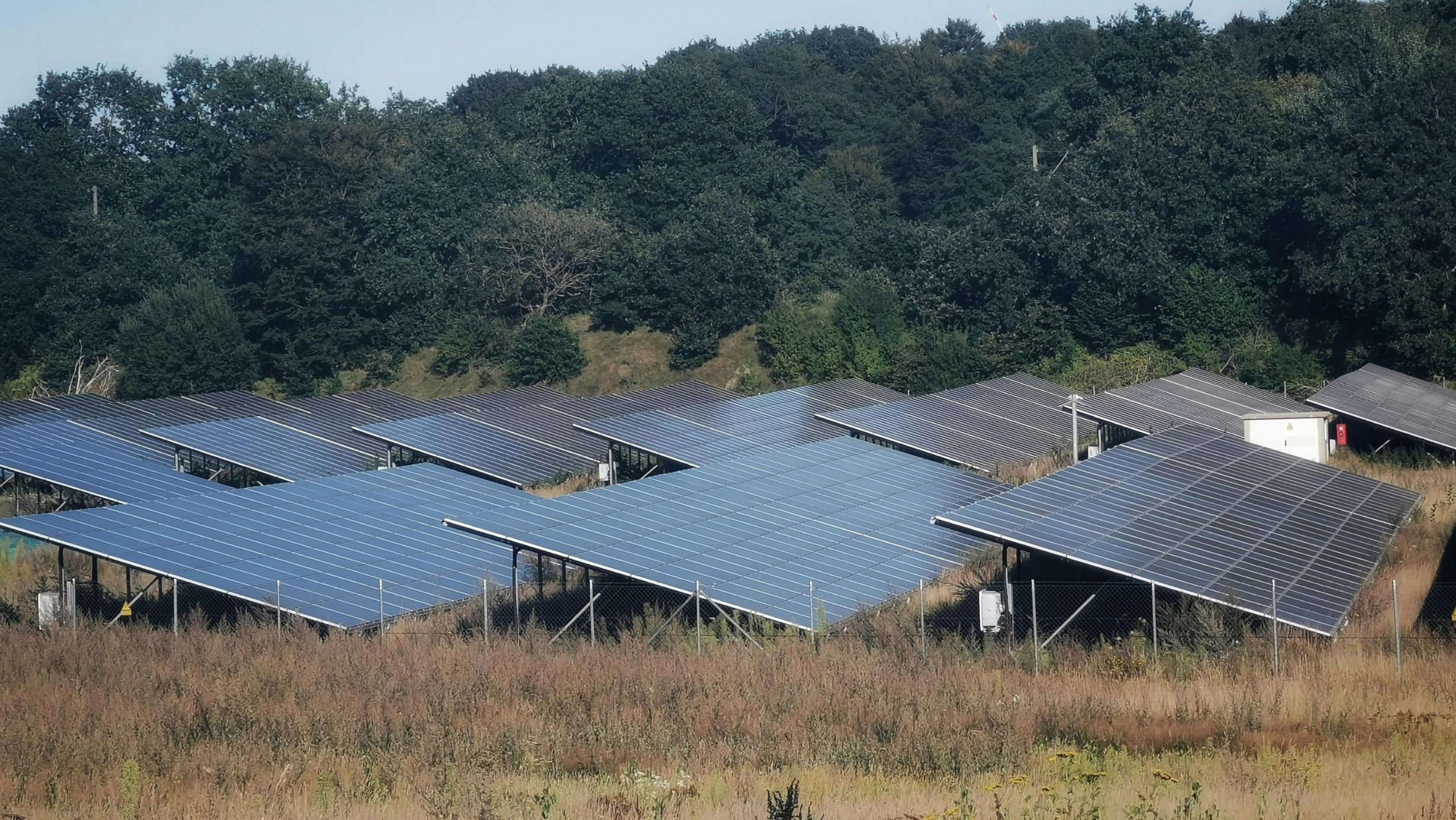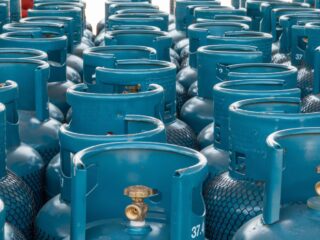
Solar farms and energy facilities face a unique challenge that many people never consider: pigeons. These birds often view solar panels as perfect spots to nest, perch, and roost, which can create problems for both the birds and the energy systems. Solar farms manage pigeon populations through protective mesh barriers, humane deterrent systems, and habitat modification techniques that keep birds safe while protecting equipment from damage.
The relationship between solar energy and wildlife conservation has become increasingly important as renewable energy expands across the globe. However, pigeons present different challenges than other bird species because they actively seek out the sheltered spaces beneath solar panels. Their nests can block airflow needed for panel cooling, while their droppings reduce energy efficiency and create maintenance issues.
Facility managers must balance wildlife protection with operational needs through carefully planned strategies. These approaches focus on preventing problems before they start rather than removing birds after they have established themselves. The methods range from physical barriers to advanced technology that monitors bird activity, all designed to create safe coexistence between renewable energy production and local wildlife populations.
Managing Pigeon Populations at Solar Farms and Energy Facilities
Solar farms face unique challenges with pigeon populations that require targeted monitoring and control approaches. These facilities must balance energy production goals with wildlife management while maintaining safe operations.
Humane and Effective Pigeon Control Strategies
Modern facilities employ multiple control methods that protect both birds and equipment without causing harm. Physical barriers prevent access to nesting areas while visual deterrents discourage roosting behavior.
Primary Control Methods
-
Wire mesh installation beneath panels
-
Spike strips along panel edges
-
Reflective tape and motion devices
-
Sound deterrent systems
OvoControl’s pigeon contraceptive strategy provides long-term population control through birth rate reduction rather than lethal methods. This approach reduces pigeon numbers gradually over time.
Habitat modification removes food sources and nesting materials from facility grounds. Staff trim vegetation and eliminate water collection areas that attract birds.
Professional bird control services conduct regular site assessments and implement customized solutions. These specialists combine multiple deterrent methods based on specific site conditions and pigeon behavior patterns.
Integrated approaches prove most effective by addressing different aspects of pigeon attraction simultaneously. Facilities that combine physical barriers with behavioral deterrents see better results than single-method approaches.
Challenges of Bird Presence in Renewable Energy Sites
Pigeons create multiple problems at solar installations that directly impact operations and maintenance costs. Bird droppings accumulate on panels and reduce energy output by blocking sunlight absorption.
Equipment Damage Concerns
-
Birds peck at electrical wiring and insulation components
-
Nest materials can block ventilation systems
-
Droppings cause corrosion of metal fixtures
Operational Impact Maintenance teams spend significant time cleaning panels and removing nests. This increases labor costs and reduces system availability.
Large solar arrays attract pigeons because they provide warm surfaces and shelter from weather. The space beneath panels creates ideal nesting conditions that pigeons find irresistible.
Safety hazards emerge as birds interfere with electrical systems. Workers face additional risks during maintenance operations in areas with heavy bird activity.
Monitoring Avian Activity and Mortality
Effective population management starts with accurate data collection about bird behavior patterns. Facilities use camera systems and motion sensors to track pigeon activity levels throughout different seasons.
Data Collection Methods
-
Automated counting systems record bird visits
-
Thermal imaging identifies roosting locations
-
Regular site inspections document nesting areas
Staff document mortality incidents to identify potential safety concerns. This information helps facilities adjust their control strategies and comply with wildlife protection regulations.
Artificial intelligence systems now help facilities analyze bird movement patterns. These systems provide real-time alerts about increased activity in sensitive areas.
Seasonal migration patterns affect pigeon populations at different locations. Facilities track these changes to predict peak activity periods and adjust control measures accordingly.
Biodiversity, Bird Conservation, and Facility Impacts
Solar and wind energy facilities create both challenges and opportunities for bird populations and biodiversity. These renewable energy projects can disrupt habitats while also providing new spaces for wildlife conservation through careful management practices.
Impacts of Solar and Wind Energy on Bird Species
Wind turbines pose the most direct threat to bird species through collision fatalities. Small passerine birds face particular risks during migration periods. Wind energy facilities can cause hundreds of bird deaths annually at individual sites.
Solar power facilities affect birds differently through habitat loss and changes to local ecosystems. Large solar installations require land clearing that displaces bird populations from grassland and aquatic habitat areas. Desert tortoises and other ground species lose breeding territories.
Primary impacts include:
-
Direct collisions with wind turbines
-
Habitat destruction from land clearing
-
Disrupted migration patterns
-
Changes in insect populations that affect bird diets
-
Fragmentation of breeding areas
Research shows that facility placement matters significantly. Sites located along major flyways create higher collision risks. However, proper site selection can reduce these negative effects on bird species substantially.
Improving Biodiversity Through Responsible Facility Management
Smart facility design can actually improve local biodiversity compared to conventional land uses. Solar installations with native vegetation support more wildlife than agricultural fields in many cases. Pollinator-friendly plants attract beneficial insects and birds.
Ground-mounted solar panels create unique microclimates underneath. These areas provide shelter and nesting opportunities for various bird species. Native grasses and wildflowers between panel rows support diverse ecosystems.
Effective management practices include:
-
Native plant restoration around facilities
-
Wildlife corridors between installations
-
Seasonal construction restrictions during bird migration
-
Regular monitoring of local populations
-
Water features for desert installations
Some facilities partner with conservation groups to create dual-use spaces. These collaborations demonstrate that renewable energy and wildlife conservation can coexist successfully through proper management approaches.
Balancing Bird Conservation with Renewable Energy Expansion
Climate change poses greater long-term risks to bird populations than renewable energy facilities. Therefore, scientists emphasize the need to balance immediate habitat impacts against climate benefits. Renewable energy helps protect species from larger environmental threats.
Bird conservation groups now work directly with energy developers on project design. These partnerships focus on site selection, construction practices, and long-term habitat management. Collaboration reduces conflicts between conservation and clean energy goals.
New technologies help minimize bird fatalities at wind energy facilities. Advanced radar systems detect approaching flocks and temporarily stop turbines. Similarly, solar projects incorporate wildlife-friendly features from initial design phases rather than as afterthoughts.
The renewable energy sector continues to develop better practices for bird protection. Research identifies which facility designs cause fewer problems for local wildlife populations while maintaining energy production efficiency.
Conclusion
Solar energy facilities face unique challenges with pigeon populations that require balanced management approaches. Humane deterrent methods such as bird netting, spike systems, and habitat modification prove most effective for long-term population control.
These facilities must balance wildlife protection with operational needs. Research shows that well-planned mitigation strategies can reduce bird conflicts without harming local ecosystems.
The success of pigeon management programs depends on regular monitoring and adaptive strategies. Solar operators who implement multiple deterrent methods typically see the best results.
As solar energy continues to expand, sustainable wildlife management becomes increasingly important for both environmental protection and facility performance.






